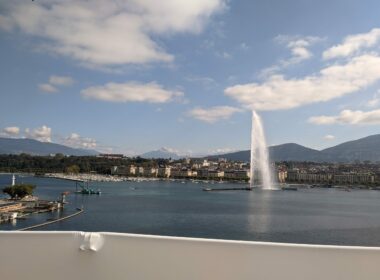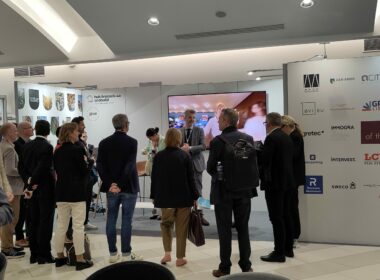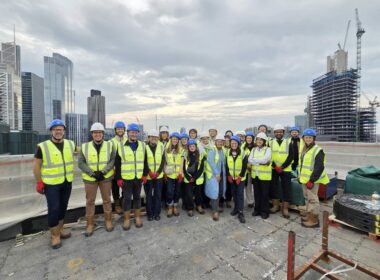In early October, 15 members of the ecobuild.brussels cluster got together in the heart of Bordeaux aka “the Wine Capital of the World”, the “Pearl of Aquitaine” and the “Port of the Moon”. It is a city that has been undergoing a major transformation over the last 15-20 years.
The objective was to discover, learn, be inspired and network, with urban renewal as the common thread. Comprising meetings with innovative players and visits to emblematic projects, this immersion highlighted sustainable solutions, adopted by the city or private players, to tackle climate and urban challenges. Bordeaux is making a name for itself as a laboratory for innovation, from heating networks to soft mobility and urban renewal. It was truly inspiring for our delegation!
Day 1: Bordeaux Metropole and Innogaronne
Day 1 began under a tentative but present sun. We crossed the famous stone bridge to the left bank. We admired the view of the quays and the city centre as we went to the Cité Municipale, where we were welcomed by various departments of Bordeaux Métropole.
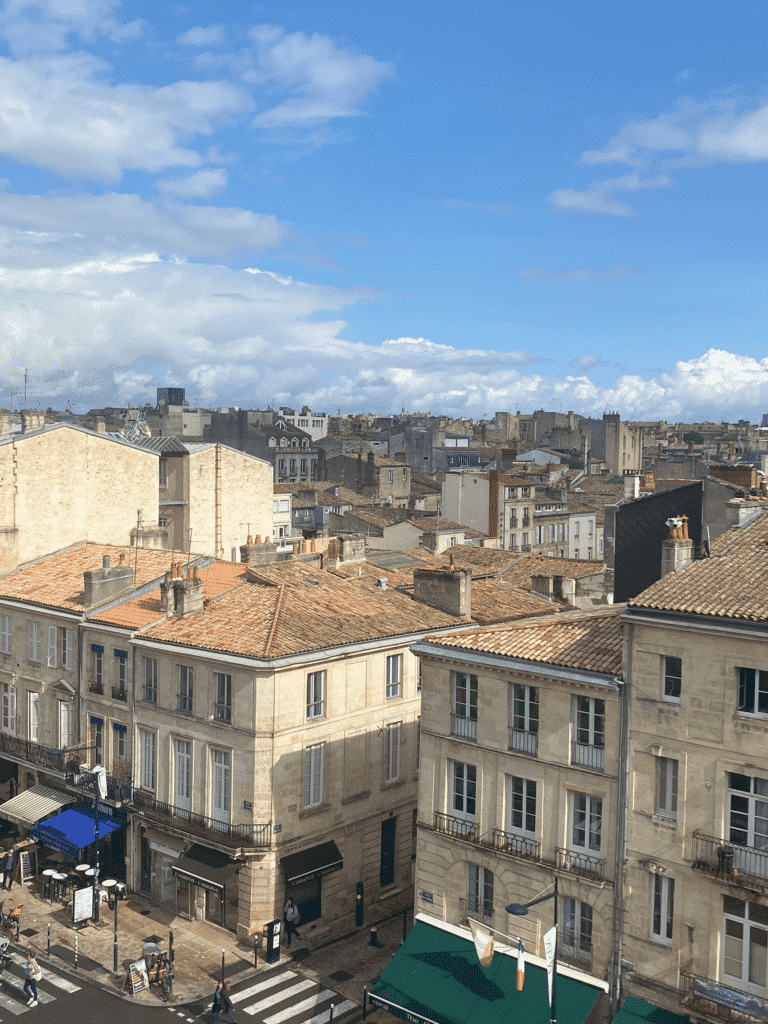
After a general presentation of the Bordeaux Métropole (competences, organisation, key figures, etc.), several sustainable development themes were presented, including:
- circular economy, materials reuse and eco-construction initiatives and projects.
- cooperation and international relations linked to the sustainability of the Métropole.
- the “Arc Rive Droite” Operation of Metropolitan Interest (OMI) with projects intended to make the right bank a territory of transition.
- district heating networks, which optimise the use of renewable energies to heat urban infrastructure, enhancing the city’s energy independence. This also helps to combat fuel poverty thanks to stable tariffs, and generates jobs that cannot be relocated.
- the Metropolitan Bicycle Plan, which aims to encourage bicycle use through appropriate and safe infrastructure, as well as initiatives to promote soft modes of travel.
These discussions highlighted the Bordeaux Métropole’s commitment to improving the quality of life of its residents while minimising its environmental impact.
After contemplating the view of Bordeaux from the 5th floor, we moved from theory to practice. We headed to Innogaronne, a hub of innovative sustainable construction companies. After a quick site visit, we heard a number of presentations by:
- Odeys: our counterpart, the Nouvelle-Aquitaine sustainable construction and development cluster
- Nobatek/INEF4: the research and innovation centre specialising in technological and environmental construction solutions
- Domo France: property developer committed to sustainable and social construction. They develop innovative and inclusive housing projects, incorporating eco-responsible practices to improve residents’ quality of life.
Wearing an ecobuild jacket and a helmet, we mounted electric bikes to discover the site of the future Coop & Bât offices just a few minutes away. As a cooperative committed to reusing construction materials, Coop & Bât promotes the circular economy by reusing local resources and supporting low environmental-impact renovation projects. The precepts put into practice on their site include reused joists, earth excavated, stored and reused directly on site and a sloping insulation box with blown straw infiltration. It is an inspiring and exemplary site in terms of bio-sourced and reused materials.
Back at Innogaronne, we discovered the IFABE workshops, a training institute dedicated to eco-construction and old-fashioned techniques. We saw an exciting and fascinating demonstration of straw walls and the use of quicklime as a base for making render and whitewash.
Koji, a Bordeaux start-up specialising in sustainable modular construction, presented its environmentally friendly buildings. They are constructed using prefabricated wooden above-ground modules, optimising the speed and durability of the sites.
Day 1 ended with a networking dinner at Les Récoltants, giving cluster members an opportunity to talk informally to each other and our guests from Bordeaux.
Day 2: Bassins à Flot, Darwin and the Silva Tower
Day 2 got off to a misty start, at the foot of the Cité du Vin, with a visit to the Bassins à Flot district by ANMA Archi who is acting as chief urban planner. This project transforms a former port area of approximately 160 hectares – then unused – into a dynamic neighborhood, , by combining the renovation of historic buildings with new construction. Not to forget the greening (100,000m² of green public spaces) and innovation. By 2025, this project plans to build 5,400 housing units to accommodate around 12,000 residents. The neighborhood is equipped with a private heating network that uses at least 70% renewable resources. . We were impressed by the project’s integrated approach, which combines housing, public spaces and local economic development.
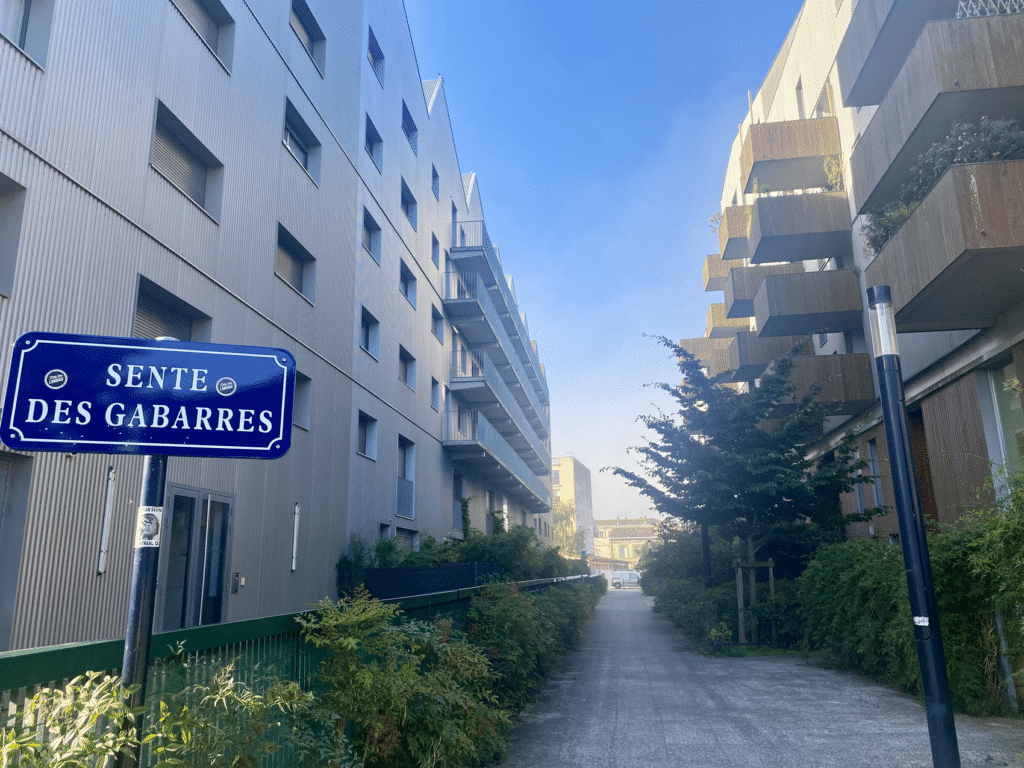
After this visit, we crossed the Garonne again back to the right bank, and in particular Darwin Écosystème, a truly militant circular economy laboratory. A small “Gallic village” in an area undergoing extensive transformation, this multifunctional space embodies the ability to reconcile social innovation, sustainability and the redevelopment of historic urban spaces. Darwin is currently home to businesses and associations working in fields such as urban agriculture, reuse and collaborative resource management. After a delightful lunch at the on-site “Magasin Général”, we got back on our bikes and headed for our last stop.
In the afternoon, we met with Artbuild for a visit to the Silva Tower. This 56-metre wooden structure tower is a bold example of sustainable construction in an urban environment. The floors and facades are made of locally sourced laminated wood. After climbing its 16 floors on foot, we were able to watch a piece of prefabricated façade being placed off-site and admire the view. The use of wood, combined with innovative energy management solutions, illustrates the transition to greener, more environmentally friendly architecture. We were also able to discuss the obstacles posed by urban planning regulations and, most importantly, fire regulations for timber structures.
And on that note, we packed our bags and headed to the station in the glorious sunshine.
Conclusion: Bordeaux is an inspiring model of urban transformation for Brussels
This study trip allowed us to discover concrete examples of sustainable urban renewal, with a focus on land planning and the energy transition. Bordeaux is positioning itself as an innovative city able to reconcile urban development and environmental protection, an approach that is inspiring new ideas to be applied in Brussels.
The many exchanges and visits have enriched the discussions on common challenges and local solutions, strengthening the links between the two cities and between members.


